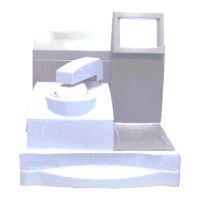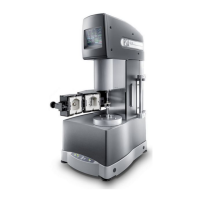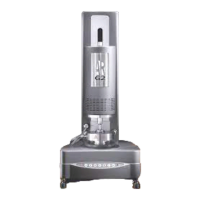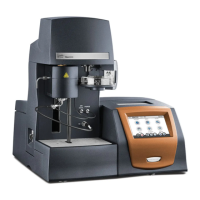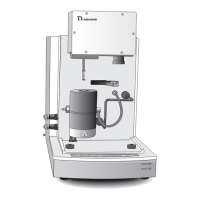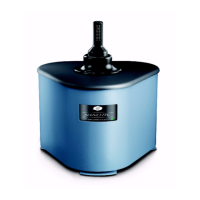DHR/AR Series SALS Accessory Getting Started Guide Page 24
To use the Laven program:
1 Select from the following parameters:
2 For the remaining two text boxes, select Mie and Intensity v. scattering angle.
3 Click New plot to perform the calculation. The results can be exported as a text file from the File menu,
which can then be opened directly by Microsoft Excel.
The first column in the results text file is headed Angle theta (these values are in degrees). The data in this
column can be converted to q values using the formula q = 4 π n / λ
0
sin(θ / 2), where n is the medium
refractive index ( ~ 1.332 for water), and λ
0
is the wavelength of the laser light in a vacuum. Since the
units of q are usually µm
-1
, the laser wavelength should also be in µm, i.e. 0.6328 (NB Excel uses radians
for angles). This line works:
=(SIN(A20*2*PI()/360))*4*PI()*1.332/0.6328
Parameter Instructions for SALS
Intensity Scale Select Logarithmic.
Leave Maximum and Minimum as Automatic.
Light Source Select Point.
Angle Scale Minimum angle and Maximum angle. These refer to the scattering angle in degrees; typically
0 and 30 respectively seem appropriate.
Angular resolution. This is the resolution to which the Mie curve will be calculated. If it is set
too high, the curve will not be smooth. If it is set too low, the calculation will be excessively
time-consuming. A value of 0.1 gives a reasonable compromise.
Drop Size Diameter (µm). Enter the value for Calibrated Particle Diameter from the Certificate of
Analysis, but note that the default for the Mie program is radius. Diameter can be selected from
the Advanced menu.
Select Disperse and scroll to either Normal or Log-normal (it doesn't seem to matter which is
selected).
Std Dev % (i.e., standard deviation %). Enter the value given on the Certificate as CV (i.e.,
coefficient of variance), which is the same thing.
N is the number of slices in the particle size distribution. The higher this is set, the longer the
calculation takes, but it is fast enough when left on 50.
Light Number of wavelengths leave as 1, as laser light is monochromatic.
Wavelength (µm) in vacuo. Enter the wavelength of the laser light, which is
0.635 µm.
Refractive index (sphere). For Real use the value given on the Certificate for Refractive index
(strictly speaking, this was not measured at the correct wavelength or possibly temperature, but
the difference will be negligible). For Imaginary use zero.
Refractive index (medium). Use the refractive index of water, which is about 1.332 (as with
the spheres, this varies with wavelength and temperature, but the effect is negligible).
Polarization. Select as appropriate. Either perpendicular or parallel options can be used with
TA Instruments SALS system.
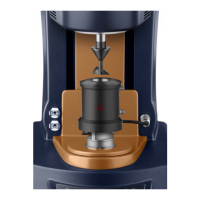
